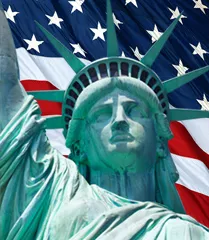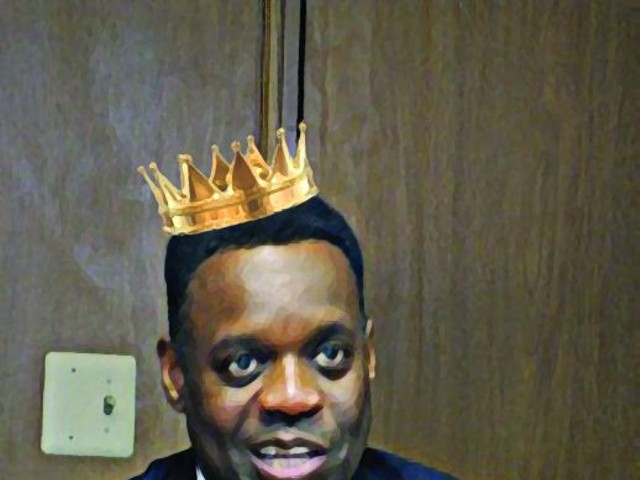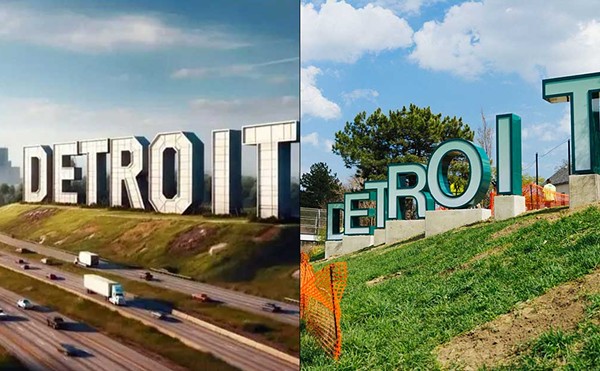“Reform the draconian marijuana laws” has been a rallying cry of this newspaper since its inception, with groves felled and gallons of ink spent outlining a folly — at a plant with medicinal, psychosocial and economic benefits.
While it’s only taken 33 years (Metro Times’ first edition was published in 1980), it seems as if that cry has finally moved the argument to a Rubicon of change; when we cross it depends on those who can influence the debate. According to an April 2013 report by the Pew Research Center, for the first time in more than four decades of polling on the issue, a majority of Americans now favor legalizing the use of marijuana. The poll, which has garnered a lot of attention from the mainstream press because of its significance, says 52 percent of Americans now say marijuana should be legal.
For years, the prevailing view on weed has been a dismissive notion that it’s a recreational drug enjoyed by the unmotivated and, worse, it’s a gateway substance to “hard” drugs. Sadder still, a militarized approach toward its domestic eradication — including the incarceration of its users — has contributed to billions of dollars misspent and countless thousands of lives ruined by a hamstrung judiciary forced to impose mandatory minimum sentences.
The story arc of how America came to this point is as old as the country itself. From our most revered founder, George Washington, who chronicled his cultivation of hemp (the stem of the cannabis plant), to the inclusion of cannabis by early 20th century chemists in mixing medications, the story of America would be incomplete without including weed.
The first encroachment of government on the use and possession of marijuana began with the 1906 Pure Food and Drug Act, which required the labeling of cannabis, and the amount contained, in over-the-counter remedies and food. Three decades later, Congress passed the Marijuana Tax Act in response to growing fear around the drug — a fear brought to you by Hollywood and its propaganda-laden masterpiece, Reefer Madness. The Marijuana Tax Act effectively outlaws pot; save for those who pay an excise tax for certain authorized uses.
Thereafter, the assault on weed grew bold: In 1951 Congress passed the Boggs Act, which established mandatory prison sentences for possessing and distributing drugs, including marijuana. Five years later, President Dwight Eisenhower signed into law the Narcotics Control Act, which established a minimum sentence of two to 10 years for a first-offense conviction of marijuana possession, and a fine of as much as $20,000.
But the most egregious assault on weed, and one that held public opinion in stasis for decades still to come, stems from the plant’s classification as a Schedule I drug by the federal government under the Controlled Substances Act of 1970. The Schedule I classification, which is the CSA’s most damning, states that “a drug or other substance has a high potential for abuse; the drug or other substance has no currently accepted medical use in treatment in the United States, and; there is a lack of accepted safety for use of the drug or other substance under medical supervision.” Other Schedule I drugs include heroin and the date-rape concoction GHB.
Sadly, there was a brief moment before anti-pot hysteria fully metastasized when things could have turned out differently. As part of the omnibus legislation that also created the CSA, Congress established what would be known as the Shafer Commission, which was charged with studying marijuana abuse in the United States. Named for its chairman, former Pennsylvania Gov. Raymond P. Shafer, the commission was doomed to failure because the executive branch had little tolerance for views that differed from those of its chief executive.
During the commission’s first report to Congress, Shafer, a moderate Republican, suggested the decriminalization of marijuana in small amounts, saying, in part:
“The criminal law is too harsh a tool to apply to personal possession even in the effort to discourage use. It implies an overwhelming indictment of the behavior, which we believe is not appropriate. The actual and potential harm of use of the drug is not great enough to justify intrusion by the criminal law into private behavior, a step [that] our society takes only with the greatest reluctance.”
You would be right to ask yourself, then, how domestic policy toward marijuana use went off the rails so precipitously, languishing as a sideline issue for more than two additional generations.
Conventional wisdom suggests you need not look further than the dickhead who signed the CSA into existence. While it was never a secret, the Nixon White House was less than enlightened — despite Nixon’s Sock-It-To-Me request from a young Goldie Hawn — and had the electorate known just what a shmuck Nixon really was, well … we know how that turned out in the end.
The Shafer Commission was a big ole hornswoggle and its findings ignored by a hostile White House. Nixon, by his own admission, had no intention of considering decriminalization of pot. He hated pot and the counterculture it became associated with:
“I had a press conference in California, which was not televised but I was asked about marijuana because a study is being made by a, group, [unintelligible] the government. Now, my position is flat-out on that. I am against legalizing marijuana. Now I’m against legalizing marijuana because, I know all the arguments about, well, marijuana is no worse than whiskey, or etc. etc. etc.
“But the point is, once you cross that line, from the straight society to the drug society — marijuana, then speed, then it’s LSD, then it’s heroin, etc. then you’re done,” said Nixon, arbiter of justice, during one of his secretly recorded Oval Office conversations; this one made in May 1971 with his chief of staff, H.R. Haldeman and White House counsel, John Ehrlichman.
Lest you think the above is some anomaly (and we’re pretty sure you don’t), the following is transcribed from another Nixon recording between the president and Haldeman, in the Oval Office, toward the end of May 1971:
Nixon: “Now, this is one thing I want. I want a goddamn strong statement on marijuana. Can I get that out of this sonofabitching, uh, [commission]?”
Haldeman: “Sure.”
Nixon: “I mean one on marijuana that just tears the ass out of them. I see another thing in the news summary this morning about it. You know it’s a funny thing, every one of the bastards that are out for legalizing marijuana is Jewish. What the christ is the matter with the Jews, Bob, what is the matter with them? I suppose it’s because most of them are psychiatrists, you know, there’s so many, all the greatest psychiatrists are Jewish. By god we are going to hit the marijuana thing, and I want to hit it right square in the puss, I want to find a way of putting more on that. …”
Haldeman: “Mm hmm, yep.”
Haldeman and Ehrlichman were each found guilty of orchestrating that infamous break-in at the Democratic National Committee headquarters in the Watergate office complex; both men served 18 months in federal custody.
Despite a seeming respite during the remainder of the 1970s, the crusade picked up with alacrity after the inauguration of Ronald Reagan in 1981. Throughout the next seven administrations, the viewpoint of at least more than half those Americans polled felt pot was too dangerous to view any other way then as a public scourge, like crack or heroin.
But, that was then. (As a point of reference, “then” reaches as far back as 2011.)
What’s Turning the Tide?
THE PEW STUDY, which naturally has weed advocates buzzing, is groundbreaking in its unambiguous demonstration that a majority of Americans favor legalization. In a previous poll conducted by Gallup last November, the question of whether the federal government should take steps to enforce anti-marijuana laws in those states where marijuana use is legal, 64 percent of adults responded no; 34 percent said yes, the feds should trump state law. While an inference from the majority of respondents who said yes to states’ rights was that marijuana should be legal in all states, when the question was asked whether you think marijuana should be legal, less than half, or 48 percent, responded in the affirmative; 50 percent said pot should not be legal.
What’s happened between then and now?
While it’s not a simple answer, there seems to be a confluence of events that have led to a majority shift in opinion. By parsing Pew’s results, one of the biggest drivers of change becomes self-evident: There’s strength in numbers.
The percentage of support for legalizing pot is directly proportional to the generation of the respondent. For instance, members of what is called “The Silent Generation,” those born between 1925-1945, continue to be less supportive of marijuana legalization than younger adults, but even here the amount favoring legalization has nearly doubled — from 17 percent to 32 percent — since 2002.
Compare that with fully 65 percent of millennials — those adults born since 1980 who are now between the ages of 18 and 32 — who favor legalizing the use of marijuana, which is up from just 36 percent in 2008 and you’ll start to understand the game-changer.
“It’s an issue that has been framed in many different ways within recent years,” says John Strate, a political science professor at Wayne State University in Detroit. “But generational replacement is likely the biggest cause for the shift in public opinion. Those older Americans who have traditionally been against legalization are dying out and a younger, more liberal generation has filled the gap.”
Strate, who noted that political scientists would also examine the issue of legalization as a “moral politics” issue, said that the four decade-long war on drugs has also contributed to a shift in attitudes as more Americans have become aware of marijuana’s medicinal properties as being legitimate and not the bogus red herring as previous administrations claimed.
“Elected officials are often reluctant to deal with issues in this category (other examples would be abortion and assisted suicide),” Strate wrote in an email. “Because, whatever position they take are certain to alienate a certain proportion of the public. Most of these issues are capable of being framed in different ways so public opinion on some of them can be fluid.”
Yet there also has been a striking change in long-term attitudes among older generations, particularly baby boomers. Half of boomers now favor legalizing marijuana, among the highest percentages ever. In 1978, 47 percent of boomers favored legalizing marijuana, but support plummeted during the 1980s, reaching a low of 17 percent in 1990. Since 1994, however, the percentage of boomers favoring legalization has doubled, from 24 percent to 50 percent.
Generation X, born between 1965 and 1980, and coming of age in the 1990s when there was widespread opposition to legalizing pot, has also expressed a dramatic increase in support for legalization — from just 28 percent in 1994 to 42 percent a decade later, and 54 percent currently, according to the Pew study.
Underscoring Strate’s notion of a moral issue being salient, part of the Pew study looked at whether respondents believed smoking pot to be a moral issue. Again, the numbers demonstrate a clear shift in attitude. Currently, 32 percent say that smoking marijuana is morally wrong, an 18-point decline since 2006, when 50 percent responded affirmatively to the question. Over this period, the percentage saying that smoking marijuana is not a moral issue has risen 15 points, from 35 percent in ’06 to 50 percent today.
As for that godforsaken War on Drugs, nearly three-quarters of Americans, 72 percent, say that federal efforts to enforce marijuana laws cost more than they are worth; and 60 percent say the federal government should not enforce federal laws prohibiting the use of marijuana in states where it is legal.
Slow and Steady,
State by State
Last November, voters in Washington state and Colorado approved ballot measures allowing for the personal use of small amounts of weed for recreational use. This brave new frontier, which comes on the heels of legalization’s previous iteration, medical use, now counts 18 states, plus Washington, D.C., as those that have some type of law on the books permitting the cultivation, possession and use of marijuana.
This past February, a coalition of congressional lawmakers, led by Reps. Jared Polis (D-CO) and Earl Blumenaur (D-OR), introduced a bill titled the “Ending Federal Marijuana Prohibition Act,” which seeks to remove the Drug Enforcement Administration’s authority over marijuana and allow each state to choose whether cannabis should be legal. Blumenauer’s “Marijuana Tax Equity Act” would create a federal excise tax on the drug. Combined, the two bills would create a regulation and taxation system for marijuana in states where it’s legal.
Polis told his hometown newspaper, the Boulder, Colo., Daily Camera, his proposed legislation doesn’t force any state to legalize marijuana. But, he said, Colorado and the 18 other jurisdictions that have chosen to allow marijuana for medical or recreational use deserve the certainty of knowing federal agents won’t raid their state-legal businesses.
“Congress should simply allow states to regulate marijuana as they see fit and stop wasting federal tax dollars on a failed drug war,” he was quoted as saying.
Polis also said he expects his measure could draw bipartisan support from fellow Democrats and from Republicans, especially those with Libertarian leanings.
A POTENTIAL ISSUE waiting for supporters of legalization is the discrepancy between legalization and decriminalization. While the practical effects are likely negligible, the difference could easily be used as a cudgel by proponents to derail momentum on the issue and set back a cause ripe for blossoming. (This is, after all, a story about weed — flowery metaphors are a must-have.)
Whether Americans want to see cannabis regulated like alcohol and tobacco versus whether they just want to let potheads be left alone will make the difference in how the issue is ultimately legislated.
“Most Americans would not be familiar with the difference between legalization and decriminalization,” said Strate, the professor at Wayne State. “Legalization makes it OK to do something; decriminalization removes criminal penalties and replaces them with civil penalties.”
Given the economic impact that regulating cannabis likely offers to federal coffers, it seems likely that once politicians get over their fear of retribution from those pockets of holdout constituents, weed will be taxed, retaxed and then taxed some more. Then another fight begins … overregulation. Not to put the cart before the horse, but it now sounds like a Republican dream.
Bryan Gottlieb is editor of the Metro Times. Send comments to [email protected].






